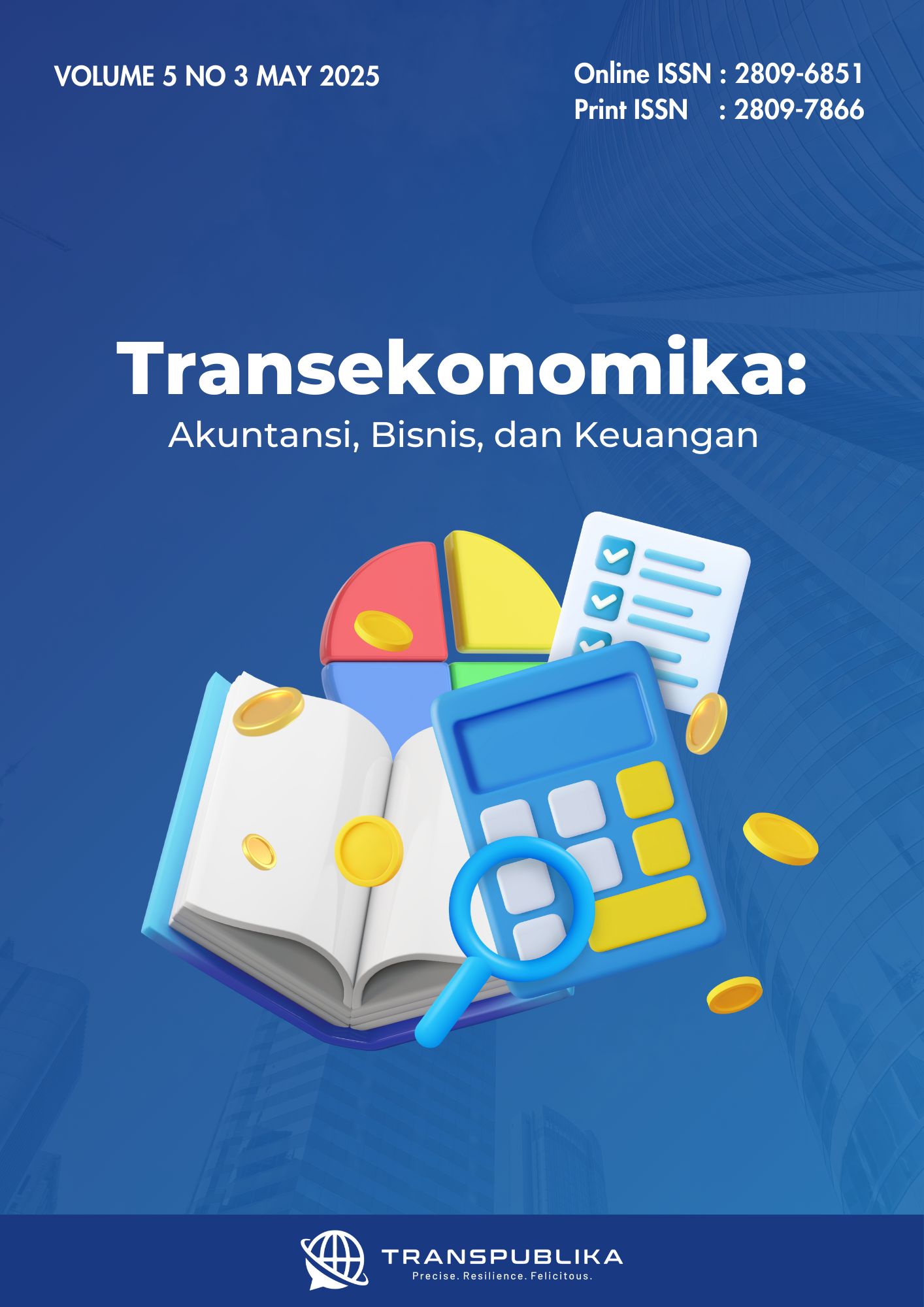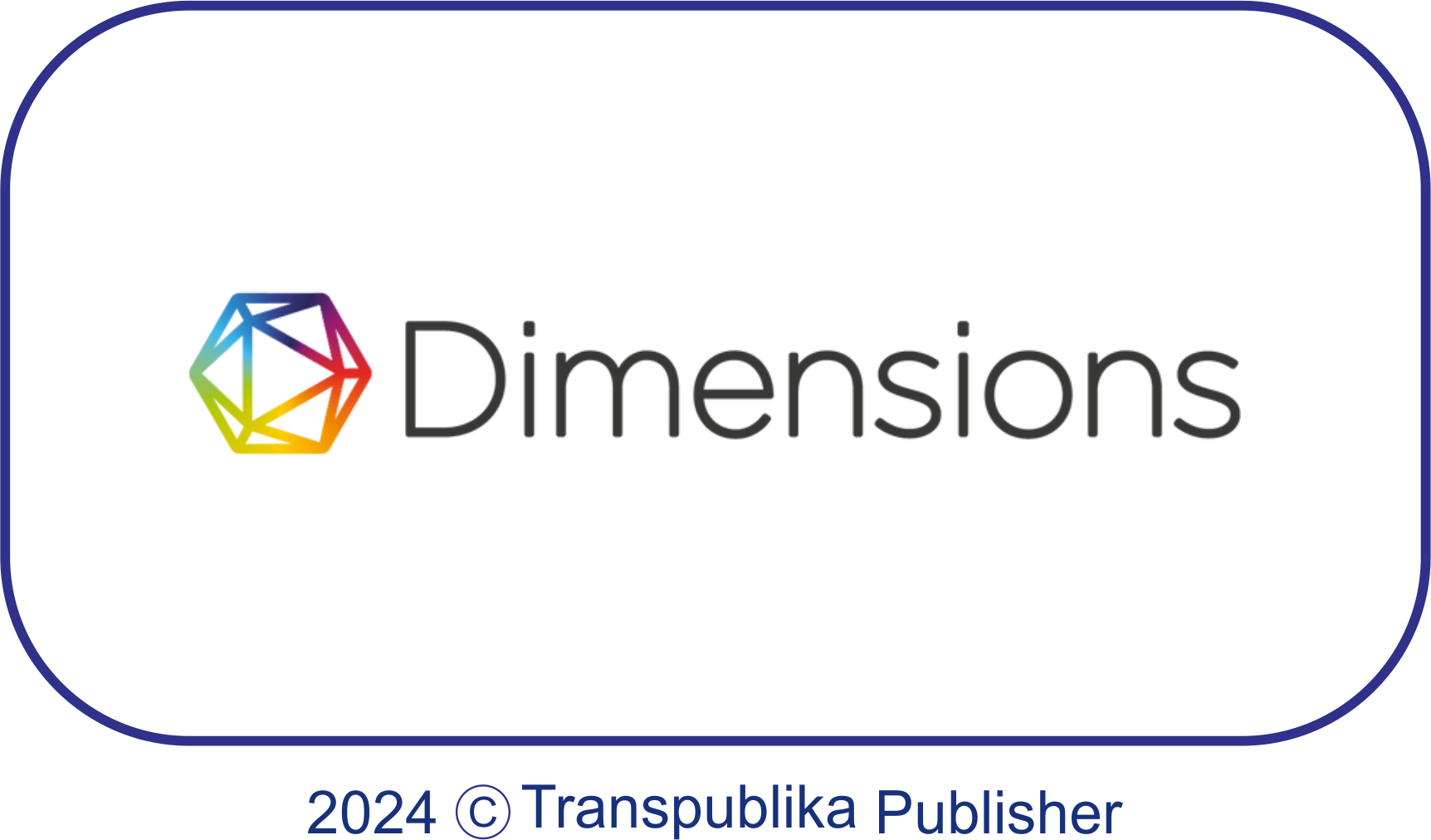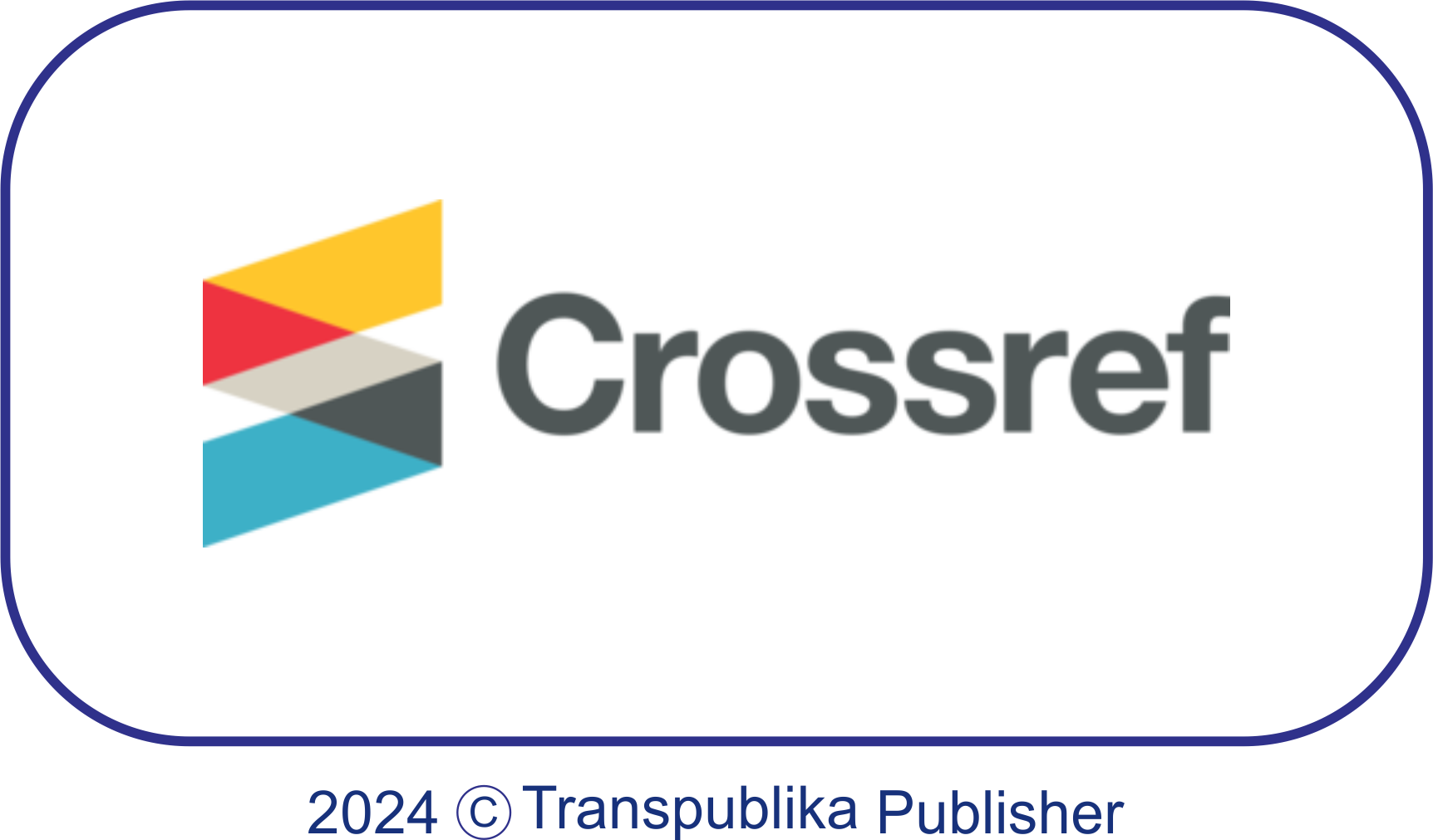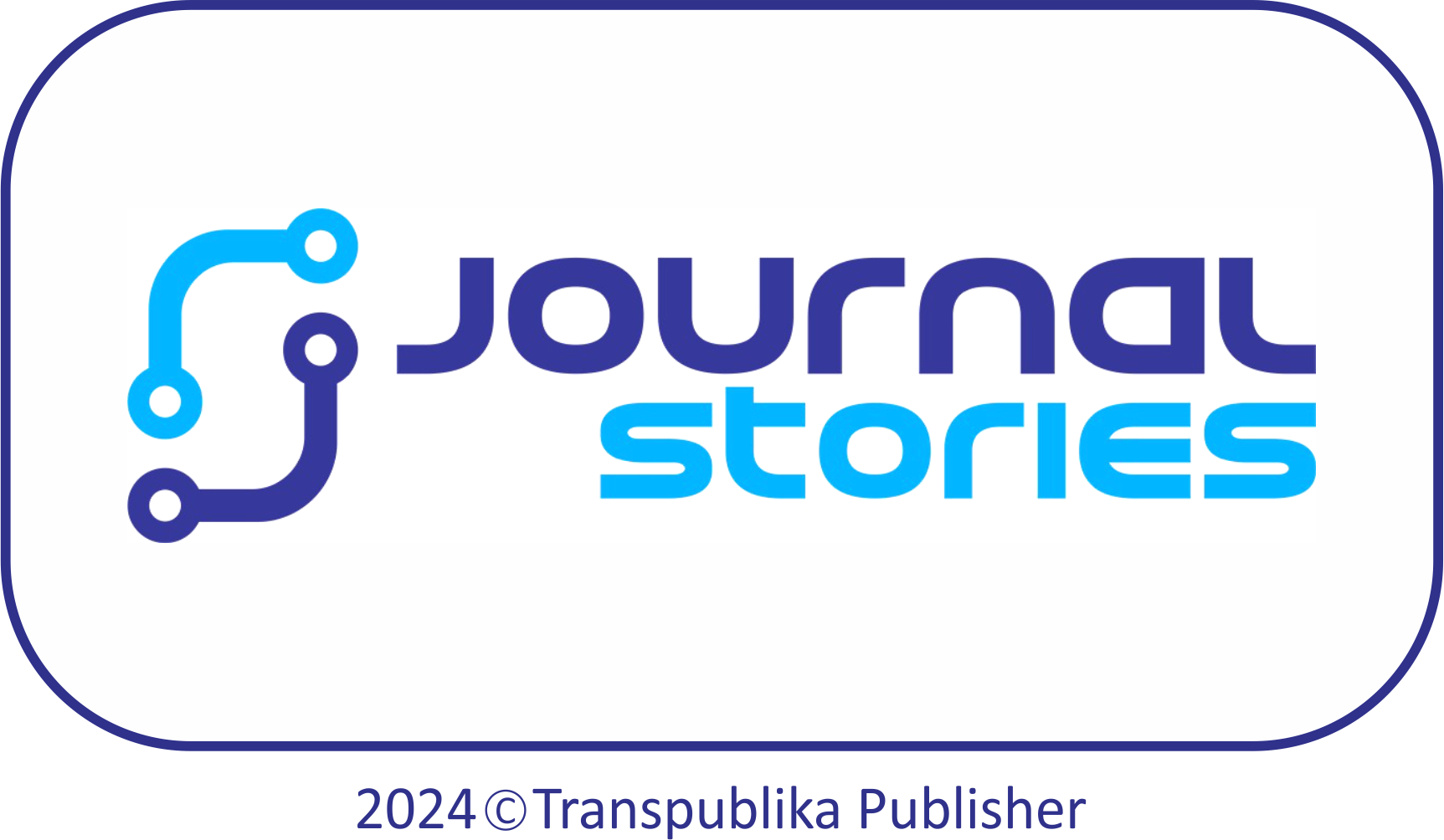Factors Affecting Debt Policy with Profitability as Moderator
Abstract
High levels of corporate debt can impact financial stability and investor confidence, potentially limiting Indonesian non-cyclical consumer companies' capacity for investment and long-term growth. The goal of this research is to analyze the elements influencing debt strategy in non-cyclical companies in the consumer sector that are publicly traded on the Indonesia Stock Exchange from 2021 to 2023, where profitability plays a role as a moderating factor. Purposive sampling was used, with 153 firms represented. This data was analyzed using IBM SPSS 25 with classical assumptions, hypothesis testing, and also moderating regression. Asset structure, institutional ownership, company size, free cash flow, and sales growth are all taken into account. This research utilizes a quantitative method, using moderated regression analysis to investigate how independent variables and debt policy are connected, and how profitability influences these connections. The results indicate that both free cash flow and company size significantly influence debt policy. In contrast, factors like asset structure, institutional ownership, and sales growth appear to have little impact. Furthermore, the moderation test reveals that profitability could be a key factor in shaping the relationship between free cash flow and debt policy. However, profitability cannot offset the impact of asset structure, institutional ownership, firm size, and sales growth on debt policy. These findings suggest that shareholders should monitor firms’ free cash flow and size when evaluating financial risk, while business managers may consider these factors when setting optimal debt levels. Investors can use these indicators to assess a firm's debt capacity and long-term viability.
Downloads
References
Aisyah, S., & Sihotang, E. (2021). Pengaruh Kepemilikan Manajerial, Kepemilikan Institusional Dan Profitabilitas Terhadap Kebijakan Hutang Perusahaan Pada Sektor Property Dan Real Estate Yang Terdaftar Di BEI Periode 2015 - 2019. Jurnal Kewirausahaan, Akuntansi, Dan Manajemen Tri Bisnis, 3(2). https://doi.org/10.59806/tribisnis.v3i2.41
Aminah, N. N., & Wuryani, E. (2021). Pengaruh Kepemilikan Institusional, Ukuran Perusahaan, Profitabilitas Terhadap Kebijakan Hutang Pada Perusahaan Manufaktur Di Bei Tahun 2014-2018. Jurnal Riset Akuntansi Dan Keuangan, 9(2). https://doi.org/10.17509/jrak.v9i2.29483
Basdekis, C., Christopoulos, A., Gakias, E., & Katsampoxakis, I. (2023). The Effect of ECB Unconventional Monetary Policy on Firms’ Performance during the Global Financial Crisis. Journal of Risk and Financial Management, 16(5), 258. https://doi.org/10.3390/jrfm16050258
Cuc, T. T. N., Vinh, T. T. N., Anh, T. D. H., Thuy, T. B. N., & Trinh, H. N. (2023). The Impact of Capital Structure on Profitability of Listed Companies in Vietnam Stock Market: A Non-Linear Analysis. Cuadernos de Economia, 46(130). https://doi.org/10.32826/cude.v1i130.1006
Darmawan, N. C., & Susanto, L. (2023). Determinants of Debt Policy in Indonesia’s Manufacturing Companies. International Journal of Application on Economics and Business, 1(1), 333–343. https://doi.org/10.24912/ijaeb.v1i1.333-343
Fachrillah, F., & Munandar, A. (2024). Pengujian Faktor-Faktor Yang Mempengaruhi Kebijakan Hutang. Wahana: Jurnal Ekonomi, Manajemen Dan Akuntansi, 27(1), 69–90. https://doi.org/10.35591/wahana.v27i1.920
Fardianti, S. A. A., & Ardini, L. (2021). Pengaruh Profitabilitas, Likuiditas, Kebijakan Dividen, GCG, dan Struktur Aset Terhadap Kebijakan Hutang. Jurnal Ilmu Dan Riset Akuntansi (JIRA), 10(5). https://jurnalmahasiswa.stiesia.ac.id/index.php/jira/article/view/4007
Hamzah, A. R., & Prasetyo, A. (2021). Pengaruh FCF, Pertumbuhan Perusahaan, Profitabilitas terhadap Kebijakan Hutang Perusahaan Pertambangan yang Terdaftar di BEI. Journal of Sustainability Business Research, 2(2). https://doi.org/10.36456/jsbr.v2i2.4164
Kartikasari, E., Dewi, A., & Sulton, M. (2022). Kepemilikan Manajerial dan Kepemilikan Institusional Terhadap Kebijakan Hutang Pada Perusahaan Manufaktur si BEI Tahun 2016-2019. Owner, 6(1). https://doi.org/10.33395/owner.v6i1.703
Kyriakopoulos, D., Yfantopoulos, J., & Stamatopoulos, T. (2024). Financial Fragility and Public Social Spending: Unraveling the Endogenous Nexus. Journal of Risk and Financial Management, 17(6), 235. https://doi.org/10.3390/jrfm17060235
Law, J., Akilah, Shane, C., Firza, S. U., & Sigalingging, E. D. (2024). Peran Profitability dalam Memoderasi Pengaruh Predictor Debt Policy. Owner : Riset Dan Jurnal Akuntansi, 8(3), 2272–2284. https://doi.org/10.33395/owner.v8i3.2214
Mahirun, M., Ayuningrum, A. P., Kushermanto, A., Prasetiani, T. R., Jannati, A., & Ardiyani, K. (2024). The Effect Of Capital Structure On Firm Value Of Lq45 Index Listed In Indonesia Stock Exchange. Quality-Access to Success, 25(202). https://doi.org/10.47750/QAS/25.202.33
Mahirun, M., Jannati, A., Kushermanto, A., & Prasetiani, T. (2023). Impact of dividend policy on stock prices. Acta Logistica, 10(2), 199–208. https://doi.org/10.22306/al.v10i2.375
Masril, M., Jefriyanto, J., & Yusridawati, Y. (2021). Faktor-faktor yang Mempengaruhi Kebijakan Hutang. Jurnal Ilmiah Akuntansi Kesatuan, 9(3). https://doi.org/10.37641/jiakes.v9i3.901
Meliala, K. T. B., Damanik, D. P. P., Sembiring, Y. N., & Ginting, M. C. (2024). Pengaruh Free Cash Flow Dan Kepemilikan Manajerial Terhadap Kebijakan Hutang Pada Perusahaan Manufaktur Yang Terdaftar Di BEI. Journal Accounting International Mount Hope, 2(1), 81–88. https://doi.org/10.61696/jaimo.v2i1.237
Nowicki, J., Ratajczak, P., & Szutowski, D. (2024). Impact of Macroeconomic Factors on Financial Liquidity of Companies: A Moderation Analysis. Sustainability, 16(11), 4483. https://doi.org/10.3390/su16114483
Nurjanah, I., & Purnama, D. (2021). Pertumbuhan Perusahaan, Ukuran Perusahaan, Struktur Aset, Profitabilitas Dan Pengaruhnya Terhadap Kebijakan Hutang. Jurnal Revenue : Jurnal Ilmiah Akuntansi, 1(2), 260–269. https://doi.org/10.46306/rev.v1i2.35
Nurkholik, N., & Khasanah, K. (2022). Pengaruh Free Cash Flow, Struktur Aset, Likuiditas, Profitabilitas, Pertumbuhan Penjualan, Dan Risiko Bisnis Terhadap Kebijakan Hutang (Studi Empiris Perusahaan Sektor Industri Barang Konsumsi yang Terdaftar di BEI 2016-2020). Dinamika Akuntansi Keuangan Dan Perbankan, 11(1), 1–21. https://doi.org/10.35315/dakp.v11i1.8948
Oktaviani, R., & Widyaningsih, I. U. (2022). Pengaruh Pertumbuhan Penjualan Terhadap Profitabilitas Perusahaan Dengan Kebijakan Hutang Sebagai Variabel Intervening. Tirtayasa Ekonomika, 17(1). https://doi.org/10.35448/jte.v17i1.15036
Panda, A. K., Nanda, S., Hegde, A. A., & Yadav, A. K. K. (2023). Receptivity of capital structure with financial flexibility: A study on manufacturing firms. International Journal of Finance & Economics, 28(2), 1981–1993. https://doi.org/10.1002/ijfe.2521
Priyan, P. K., Nyabakora, W. I., & Rwezimula, G. (2024). Firm’s capital structure decisions, asset structure, and firm’s performance: application of the generalized method of moments approach. PSU Research Review, 8(3), 813–827. https://doi.org/10.1108/PRR-06-2022-0069
Ramadhan, A. (2024). Dinamika Profitabilitas dan Kebijakan Hutang: Dampaknya terhadap Evaluasi Nilai Perusahaan melalui Kebijakan Dividen. KINERJA: Jurnal Manajemen Organisasi Dan Industri, 3(1), 52–62. https://doi.org/10.37481/jmoi.v3i1.121
Rofika, & Oktari, V. (2019). Debt Policy: Affecting Factors and Their Impact on Company Values. Research Journal of Finance and Accounting, 10(14). https://doi.org/10.7176/RJFA/10-14-14
Ross, S., Westerfield, R., & Jordan, B. (2022). Fundamentals of financial administration. Bookman Editora.
Samal, D., & Yadav, I. S. (2024). Agency Conflicts, Corporate Governance, And Capital Structure Decisions Of Indian Companies: Evidence From New Governance Laws. Journal of Advances in Management Research, 21(1), 96–124. https://doi.org/10.1108/JAMR-04-2023-0094
Setiawan, C. A., & Bangun, N. (2021). Analisis Faktor-Faktor Yang Mempengaruhi Kebijakan Hutang Perusahaan Dengan Moderasi Profitabilitas. Jurnal Paradigma Akuntansi, 3(4), 1478. https://doi.org/10.24912/jpa.v3i4.14964
Setyawati, A., Wahid, M. N. A., Soehartatiek, & Effendi, D. K. (2023). Determinansi Kebijakan Hutang Perusahaan Manufaktur Yang Terdaftar Di BEI Tahun 2018-2022. MASMAN : Master Manajemen, 1(4), 191–210. https://doi.org/10.59603/masman.v1i4.351
Sianturi, H., Nasir, D., Oktavia, R., Simamora, L., Rapel, R., & Diarsyad, M. I. (2023). Pengaruh Likuiditas, Profitabilitas, Free Cash Flow Terhadap Kebijakan Hutang Dengan Kebijakan Dividen Sebagai Variabel Moderasi. Journal of Management and Social Sciences, 2(4), 220–235. https://doi.org/10.55606/jimas.v2i4.670
Sidik, P., & Suhono, S. (2020). Pengaruh Profitabilitas Dan Leverage Terhadap Agresivitas Pajak. E-Jurnal Ekonomi Dan Bisnis Universitas Udayana. https://doi.org/10.24843/eeb.2020.v09.i11.p02
Sugiyono. (2019). Metode Penelitian Kuantitatif, Kualitatif, dan R&D. Alfabeta.
Supriadi, I. (2020). Metode riset akuntansi. Deepublish.
Susanti, A., & Windratno, W. (2020). Pengaruh Struktur Aset, Solvabilitas Dan Profitabilitas Terhadap Kebijakan Utang Jangka Panjang (Studi Empiris Pada Perusahaan Manufaktur Sektor Makanan dan Minuman yang Terdaftar di Bursa Efek Indonesia Pada Tahun 2015-2019). Repository STIE Indonesia (STEI) Jakarta. http://repository.stei.ac.id/id/eprint/3439
Susanto, L., & Benny, V. A. (2021). Analisis Faktor-Faktor Yang Mempengaruhi Kebijakan Hutang Dengan Profitabilitas Sebagai Variabel Moderasi. Jurnal Paradigma Akuntansi, 3(4). https://doi.org/10.24912/jpa.v3i4.14957
Tuanaya, M. F., & Prasetya, B. P. (2024). Pengaruh Profitabilitas, Kepemilikan Manajerial dan Pertumbuhan Perusahaan Terhadap Kebijakan Utang. Digital Bisnis: Jurnal Publikasi Ilmu Manajemen Dan E-Commerce, 3(2), 243–252. https://doi.org/10.30640/digital.v3i2.2627
Ulya, H. (2018). Pengaruh kepemilikan institusional, ukuran perusahaan dan kebijakan dividen terhadap Kebijakan hutang pada perusahaan Manufaktur di bursa efek Indonesia. STIE Perbanas Surabaya.
Van Dinh, D., & Thi Thu Huyen, V. (2024). Commercial banks’ capital structure and performance in Vietnam: Panel data model approach. Banks and Bank Systems, 19(2), 126–139. https://doi.org/10.21511/bbs.19(2).2024.10
Veronica, M., & Sari, R. (2023). Pengaruh Kepemilikan Asing Dan Debt Equity Rasio Terhadap Harga Saham Di Masa Pandemi Covid. SEIKO: Journal of Management & Business, 6(2). https://doi.org/10.37531/sejaman.v6i2.5145
Veronisa, F. I., Budiantoro, H., Santosa, P. W., & Lapae, K. (2023). Pengaruh Struktur Aset, Free Cash Flow dan Pertumbuhan Perusahaan Terhadap Kebijakan Hutang dengan Profitabilitas sebagai Variabel Intervening. Journal of Business and Economics Research (JBE), 4(2), 174–185. https://doi.org/10.47065/jbe.v4i2.3544
Viriany, G. S. (2022). Faktor-Faktor Yang Mempengaruhi Kebijakan Hutang Pada Perusahaan Manufaktur. Jurnal Ekonomi, 26(11), 103–124. https://doi.org/10.24912/je.v26i11.769
Widowati, E. H. (2024). Pengaruh Tata Kelola Dan Modal Intelektual Terhadap Nilai Perusahaan Dengan Profitabilitas Sebagai Intervening. UEU Digital Repository. https://digilib.esaunggul.ac.id/pengaruh-tata-kelola-dan-modal-intelektual-terhadap-nilai-perusahaan-dengan-profitabilitas-sebagai-intervening-34131.html
Zayceva, T., Makareva, E., & Kovalev, E. (2023). Assessment Of The Impact Of The Debt Burden On The Efficiency Of The Enterprise. Actual Directions of Scientific Researches of the XXI Century: Theory and Practice, 11(4), 179–191. https://doi.org/10.34220/2308-8877-2023-11-4-179-191
Copyright (c) 2025 Angelica Valencia, Sherly Lim, Felicia Hanitio, Hasanain Salim Rasheed

This work is licensed under a Creative Commons Attribution 4.0 International License.








.png)







.png)


.png)

.png)















